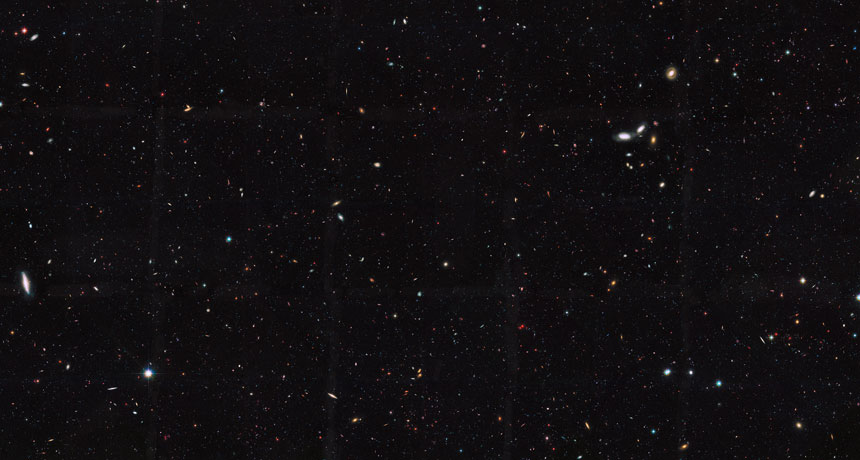(for more about Power Words, click here)
arXiv A website that posts research papers — often before they are formally published — in the fields of physics, mathematics, computer science, quantitative biology, quantitative finance and statistics. Anyone can read a posted paper at no charge.
computer model A program that runs on a computer that creates a model, or simulation, of a real-world feature, phenomenon or event.
galaxy A massive group of stars bound together by gravity. Galaxies, which each typically include between 10 million and 100 trillion stars, also include clouds of gas, dust and the remnants of exploded stars.
mega A prefix for units of measurement meaning million in the international metric system. Also colloquially used as an adjective to mean some really large, imprecise number.
Milky Way The galaxy in which Earth’s solar system resides.
optics Having to do with vision or what can be seen.
physical (adj.) A term for things that exist in the real world, as opposed to in memories or the imagination. It can also refer to properties of materials that are due to their size and non-chemical interactions (such as when one block slams with force into another).
runt An organism that starts its life much smaller than usual, and may stay smaller than normal into adulthood.
star The basic building block from which galaxies are made. Stars develop when gravity compacts clouds of gas. When they become dense enough to sustain nuclear-fusion reactions, stars will emit light and sometimes other forms of electromagnetic radiation. The sun is our closest star.
sun The star at the center of Earth’s solar system. It’s an average size star about 26,000 light-years from the center of the Milky Way galaxy. Or a sunlike star.
telescope Usually a light-collecting instrument that makes distant objects appear nearer through the use of lenses or a combination of curved mirrors and lenses. Some, however, collect radio emissions (energy from a different portion of the electromagnetic spectrum) through a network of antennas.
trillion A number representing a million million — or 1,000,000,000,000 — of something.
universe The entire cosmos: All things that exist throughout space and time. It has been expanding since its formation during an event known as the Big Bang, some 13.8 billion years ago (give or take a few hundred million years).








